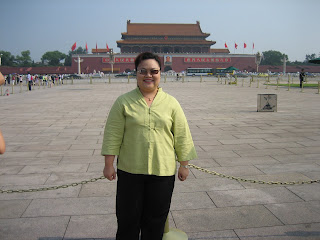

First impression - it's big, very big. Trudging from the Meridien Gate to the Outer Court to the Inner Court, I definitely got the idea that was intended by the master architects - the Emperor is No. 1 and the peasant bows and scrapes. But rather than stooping to the level of an insect, I actually felt happy and relieved. At least the peasants were free to roam the fields, villages and towns experiencing life rather than being locked up in a gilded cage.
And even as I admired the majestic structures, golden statues and imperial throne room of the Outer Court, it felt a bit hollow. It was only when we entered the eastern palaces, where the imperial household lived, that I actually felt engaged. It was much easier for me to identify with stories of Emperor Qian Long spending his retirement in the Palace of Tranquil Longevity than as an Emperor issuing royal edicts from the Hall of Supreme Harmony. I had a lot more fun roaming the back alleys and stumbling upon small palaces than actually walking the Imperial route. That's probably my peasant DNA kicking in :-)


I did learn a lot about Chinese history and am very grateful to my travel companion - Daisy Wu - for showing me round Gu Gong. And also to her best friend - Whitney Wang - for helping to organize the trip and planning my itinerary. You're both STARS!
No comments:
Post a Comment